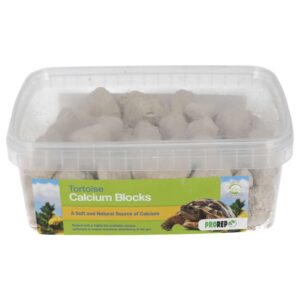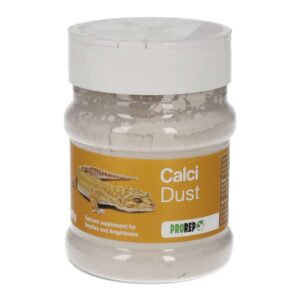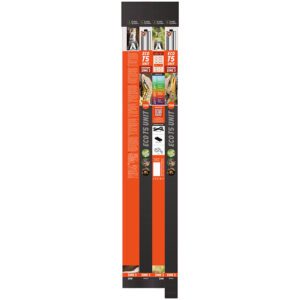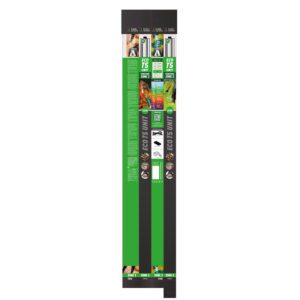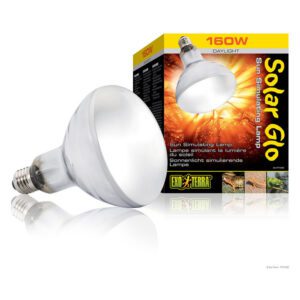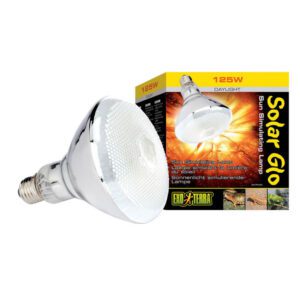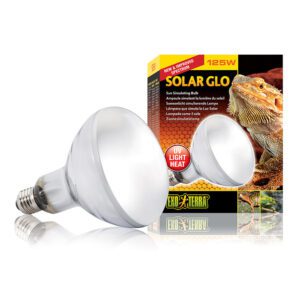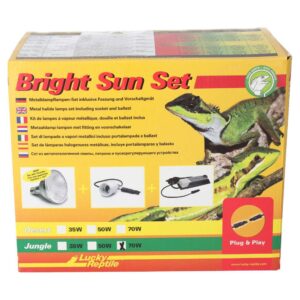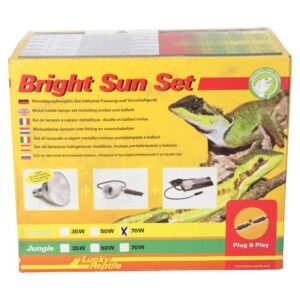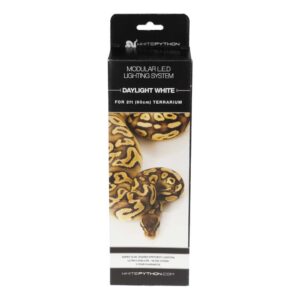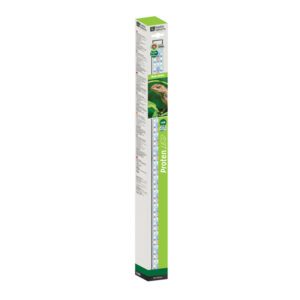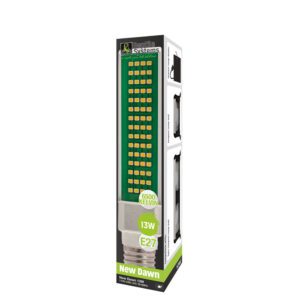On entering the world of keeping reptiles and amphibians, we are soon confronted with essential lighting needed in enclosures. Immediately we are almost overwhelmed by the choices of available lighting: UVB tubes, coiled lamps, halogens of many kinds, bulbs that emit heat and UVB in one, green, blue, red lamps… the list goes on.
I have done my best to gather all the information on lighting used for reptiles in order to explain how they work, what they provide to herptiles, and how to make the right choices for your animal. I’ll be using scientific explanation where I can, but I aim to write this in a digestible format so that all the information is there, but it is also easy enough to take on board.
First, let’s look at the role of light in nature.
The sun gives off electromagnetic radiation, which is filtered by the earth’s atmosphere. This consists of infrared, visible, and ultraviolet light. Different animals have different adaptations to their vision regarding what they can see of the electromagnetic spectrum, and as the name suggests we as humans only see the ‘visible’ portion with our natural eyesight.

This graph is based on work done by NASA – it can be presented in many formats. This one features attenuation dips that represent energy absorption by water and carbon dioxide. This allows a good visual for separating the various groups of wavelengths.
Let’s look at the different sections.
UV
- UVC cannot reach the Earth as it is blocked by both the ozone layer and the upper atmosphere of the planet. That’s good as UVC would be extremely damaging to cells.
- UVB is an important component in biology on Earth and this spills over into the husbandry of our captive animals. Its main function is to facilitate the production of vitamin D in animals. Of course, too much is harmful, but it is essential in the right amounts depending on the animal in question.
- UVA is not seen by the human eye but for many animals, reptiles included, it contributes to vision and comprehension of the environment around them.
Visible Spectrum
- Ranging through indigo, blue, green, yellow, orange to red. This then spills into the infrared wavelengths that we cannot see but feel as heat energy.
- Organisms on Earth also utilise these wavelengths for many functions. Plants, in particular, need red and blue wavelengths from the spectrum for photosynthetic processes.
- For us and other animals, the detection of this spectrum influences our natural physiological rhythms (such as the circadian rhythm) by allowing us to process night and day transitions. This is why blue light emitted from electronic screens can cause sleeping issues.
Infrared
- This is separated into near, mid, and far-infrared (NIR, MIR, and FIR) or infrared A, B, and C.
- We cannot see infrared, but some animals can. Snake species detect infrared as a means to hunt warm-blooded prey.
- IR-A is the highest energy infrared (short-wavelength = high frequency = high energy) and this decreases to IR-B and IR-C. This will be discussed more in the following guide to heating, but it is important to note that bright light (mimicking the daytime sun) prompts basking behaviour in ectothermic animals such as reptiles because they seek sources of IR-A to deeply warm their tissues (approximately 35% of sun radiance is IR-A).
What does UV mean to reptiles and amphibians?
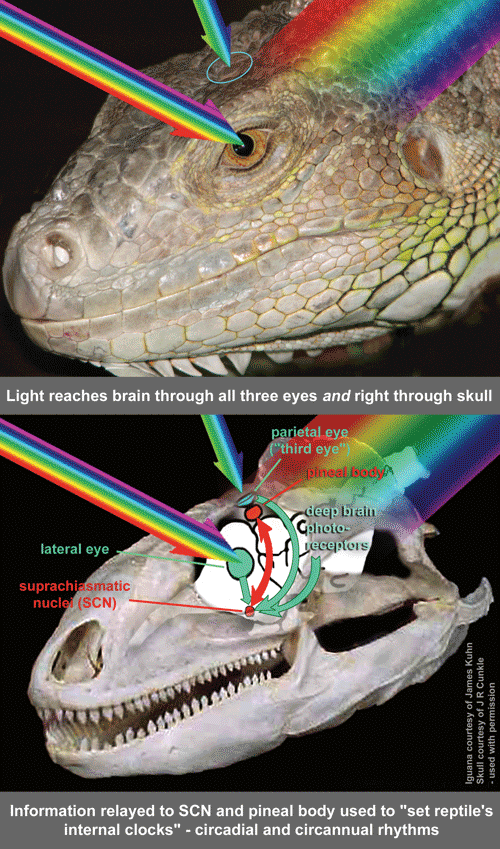
While UVB is the hot talking point when it comes to essential wavelengths, UVA plays an important role as well. Most reptiles – diurnal lizards in particular – have a fourth retinal cone associated with colour vision (humans have three). This fourth cone is sensitive to UVA, which allows them to perceive more colour than we do. This is thought to be associated with prey and mate detection – especially in species with vibrant skin pigmentations. Therefore, UV lighting needs to be provided if reptiles are to have access to their full spectrum of vision.
The pineal or parietal eye as seen in certain reptile species is also thought to detect light radiation and is closely linked to its biological rhythms, such as those that change with the seasons and initiate reproductive cycles. Photo by Dr. Frances Baines.
The synthesis of vitamin D
Vitamin D is produced from provitamin D3, also known as 7-dehydrocholesterol. This is already produced naturally in the body by cells in the epidermis. However, UVB wavelengths of 290 – 315nm are required to begin its conversion into usable D3. Peak production has been recorded at 297nm in humans. Provitamin D3 is rapidly converted into pre-D3 in these conditions. The process is called photolysis – when chemical compounds are broken up by light photons. It is also worth noting that vitamin D3 is a hormone and not a vitamin because it is predominately produced by the body with very little coming from the diet. This hormone has many functions from improving the functions of the immune system, signaling the gut to absorb calcium, to binding calcium to the skeleton.
Keep in mind that UVB is blocked by glass and most plastics, so UV wavelengths will not reach an animal through the transparent walls of their enclosure. This also poses a big risk of overheating the interior.
When basking, the heat accumulated in the tissues from basking facilitates the transformation of pre-D3 into D3. This takes place steadily over the course of several hours. Vitamin D3 can then circulate the body in the bloodstream, taken up by a protein that binds to the D3.
Vitamin D3 can be converted to calcifediol and stored in the liver. This is the marker for vitamin D levels in the body of a reptile when tested via a blood sample. This calcifediol can then circulate freely in the bloodstream, or it can be converted to the active hormone calcitriol via the kidneys.
Now you have an idea of how it’s made and how UVB is essential for its biosynthesis – but why is it so important?
No doubt you’ve heard of vitamin D deficiency in humans which contributes to low mood – it is particularly suffered in the winter months while UV exposure from the sun is at its lowest in the UK. But D3 has other essential roles in the body, particularly in immune function, which is why it’s recommended to be taken as a supplement if you are at risk of prolonged deficiency.
The main importance of this compound for reptiles is for the uptake of dietary calcium from the gut and transporting it around the body, particularly to the bones. Without proper calcium uptake, it is instead taken out of the bones, leaving them weak and fracture prone. They often then end up bending and becoming misshapen, leading to a crippling condition called metabolic bone disease (MBD). Once progressed it is not reversible; it is crippling and often fatal if left untreated.
Not only that, but other biological functions such as immune system processes, muscle, nerve, and organ health rely on an adequate amount of available vitamin D. An early sign of low calcium (hypocalcaemia) is lethargy and muscle spasms.
Additionally, herptiles that are reproducing need adequate calcium for egg production. Lacking at this time can cause reproductive issues, exacerbated calcium taken from the bones, and even a condition known as ‘egg binding’ (the eggs are unable to pass out of the body).
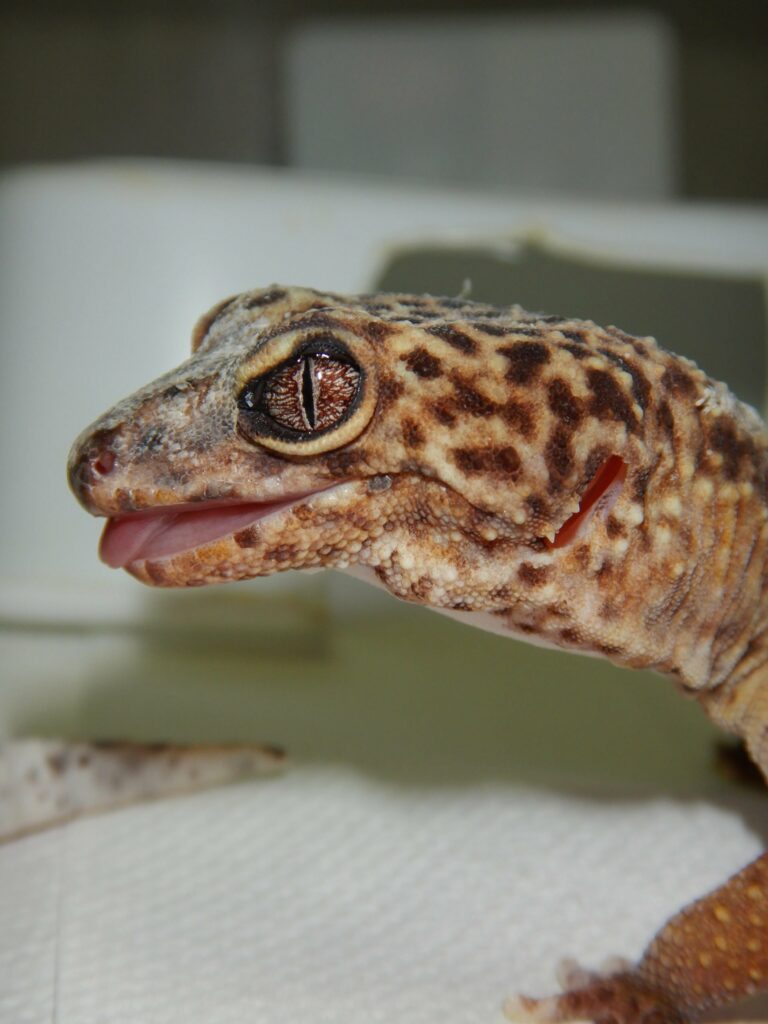
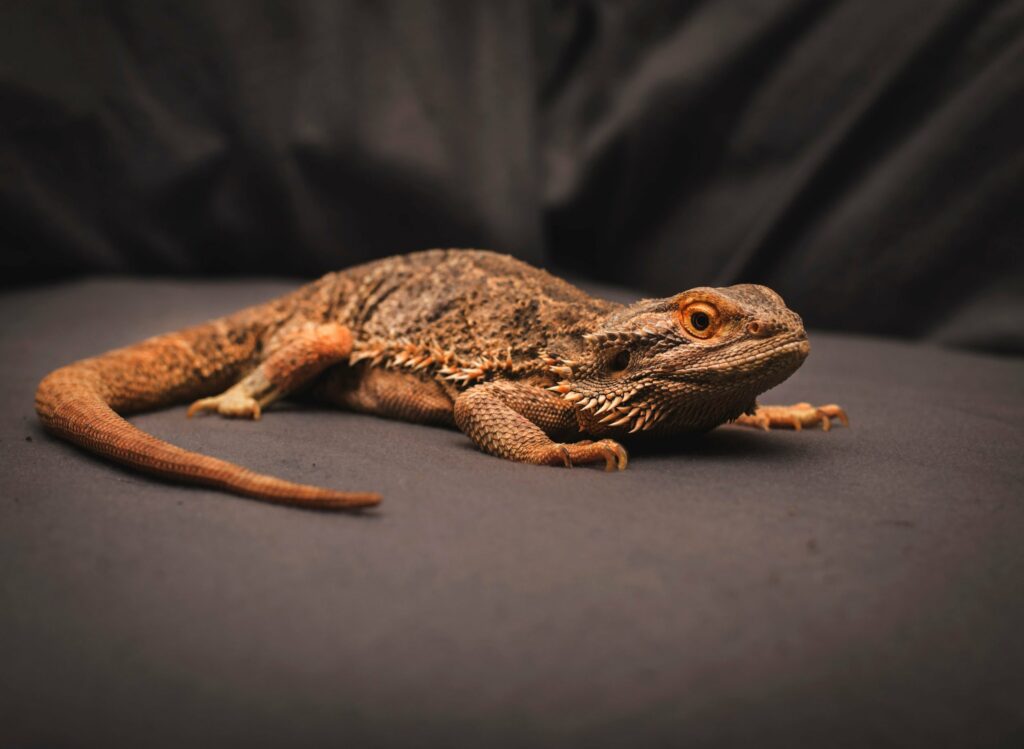
Supplementation
For many years, reptile species such as leopard and crested geckos were not labelled as needing UVB light exposure as they could be supplemented with powder vitamin blends that contained D3. This has worked for decades, but there is now a push in the hobby for more natural setup design and access to enriching natural opportunities. In reality, wild reptiles get their UVB from overhead sunlight and are able to regulate their exposure. We don’t know for sure the optimal D3 supplement dose for varying species at this stage. Plus, we can all agree it feels a lot better to have natural UVB exposure than to stay indoors and only take a vitamin supplement. There is no reason to abandon the possibility that reptiles also get positive endorphin effects from sunlight as we do.
Bear in mind that supplementation with calcium is necessary for reptiles and amphibians (although snakes obtain plenty of dietary calcium from their vertebrate prey). The insects and plants that captive herps consume simply have not had the time to absorb as many minerals as would happen in a wild setting and we do not know the calcium levels in the soil from which the feed and plants were grown. So, calcium intake and UVB exposure need to work in tandem for our animals’ health.
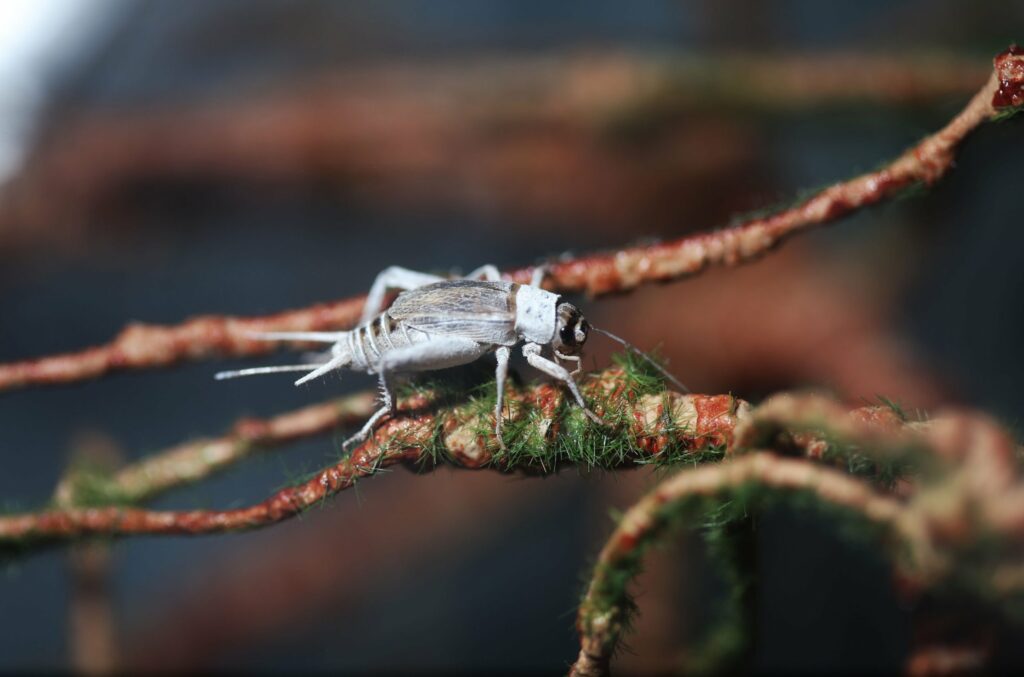
Using multivitamins is still encouraged in the hobby as well. Many are on the market that contain blends of essential calcium and other compounds such as carotenes that benefit skin pigmentation and act as antioxidants. These supplements often come in D3 and non-D3 versions. Use very sparingly if your supplement contains D3, as too much can indeed be toxic (hypervitaminosis-D). Expert keepers of your species should be able to provide schedules that have worked for their animals – this is usually just a few doses per month. With the correct UVB lighting, you shouldn’t need a D3 supplement at all. One amazing fact is that a self-regulating reptile cannot experience D3 toxicity under UVB light as there are inbuilt biochemical mechanisms to prevent this, also activated by UVB. A proportion of previtamin-D3 ends up converted to either lumisterol-3 or tachysterol-3, which are both biologically inactive and stored in the skin as a sort of ‘reserve’. That’s pretty handy!
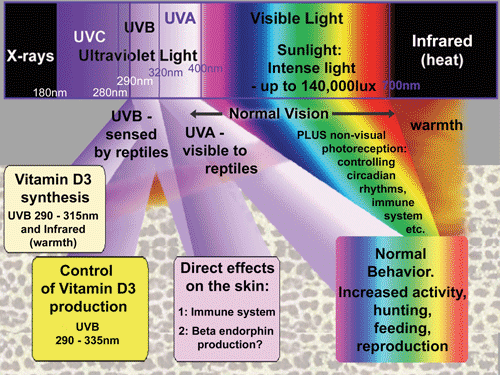
A summary of the interactions herptiles have with each section of the light spectrum. Made by Dr. Frances Baines.
Having discussed UVB and why it’s important, what UVB do you choose?
Not all UVB lamps are the same. The first step in choosing the lighting is to determine what strength of UVB your animal needs, and this comes from data collected on how wild specimens act, and where they live. Thankfully, a brilliant study on this was conducted by herpetologist Dr. Gary Ferguson and his colleagues where 15 species of lizards and snakes were tracked in their natural habitats, and their basking habits were observed and recorded. The strength of the UV wavelength at their basking sites was recorded as well as the exposure time. Other remarks on the behaviours were made, such as full or partial basking in sunbeams or in shade, and whether the animals were considered thermoregulators or thermal “conformers”. There are many factors to consider between species to find the ideal UVB requirements, so these were important observations to make to avoid too much inaccurate assumption or generalization.
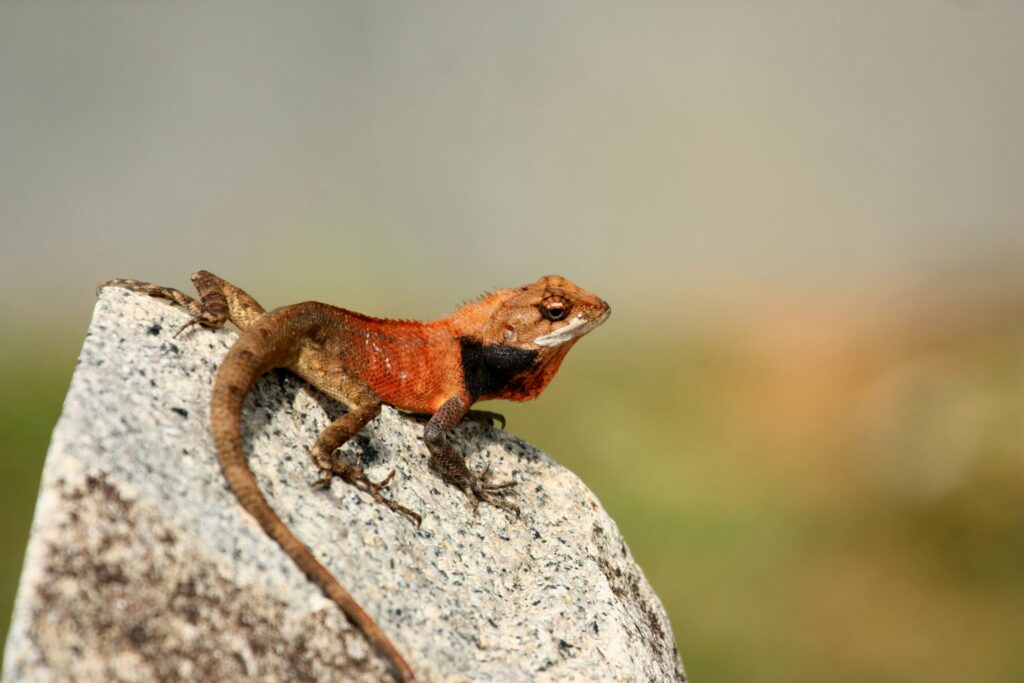
Just because a species comes from a hot environment does not mean they simply sit there all day. Each species divides its daily time budget up into different activities, and they have to control their body temperature the whole time via the environment as they are ectothermic.
What’s more, thanks to this original study, the ‘UV-Tool’ was created, which can extrapolate behaviours of herpetofauna in relation to sun exposure and place them into one of the four designated Ferguson Zones. More than 200 species’ UVB requirements have now been estimated thanks to these developments. Even better, the suitability of several popular reptile lighting brands have been assessed to help herpetoculturists make the best choices. This information is free to access online and is invaluable when seeking lighting to choose from.
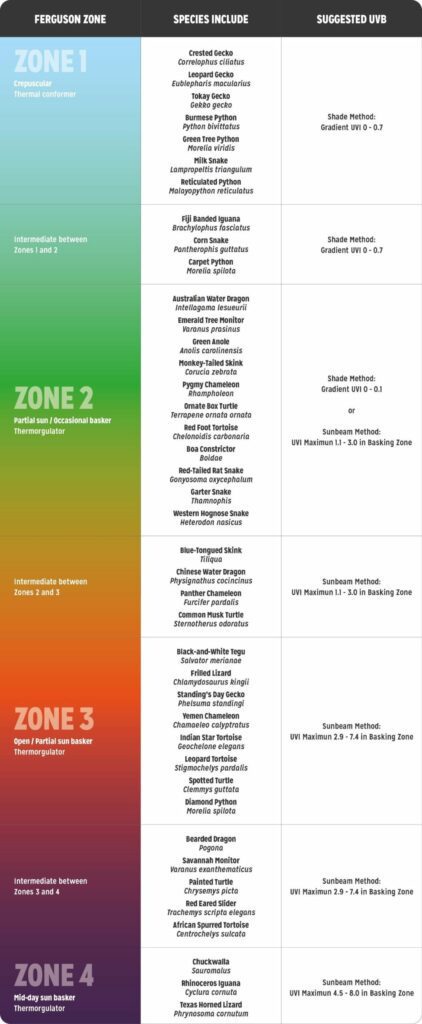
Some brands are now pushing forward the use of Ferguson Zones as descriptors of the UVB output of lamps. Alternatively, they provide the UVI value, which we can relate directly to the zones. Traditionally, lighting has been described with percentage values, such as 5%, 6%, 12%, and so on. This referred to the percentage of the total output of energy that was specifically UVB, as a result of the amount of UVB-emitting phosphors used in manufacturing the lamp. The issue with this is that it doesn’t quite describe the actual UV Index range of the output and so you may end up with a UV exposure that is not appropriate for your animal. Labels such as ‘desert’ and ‘rainforest’ are even vaguer. Since Ferguson Zones were created with real behavioural data, they are considered the most accurate way of grading UV sources with a UVI reader. It is expected that percentages will be completely phased out in favour of this system across all brands as things progress. Much of this packaging also comes with guidance on placement of the UV source, with or without reflectors or mesh barriers.
UVB lights come in the form of fluorescent tubes, coil lamps, and even in combination with some incandescent heat lamps. Here are the differences:
UVB Fluorescent Tubes
These are likely the most common sources of UVB in the UK at the moment. They emit some visible light but do provide both UVA and UVB of varying degrees depending on the type.
T8 Tubes are the ‘older’ model of fluorescent UVB tubes, The T stands for tubular and the number immediately following the T gives the diameter of the lamp in eighths of an inch (25.4mm). They provide adequate UVB strength when used with a reflector at the manufacturer’s recommended distance – this is usually 8-10 inches from the tube to the animal’s skin or can be used without a reflector for species that do not seek out higher levels of UVB.
T5 Tubes are newer on the market and often described as ‘High Output’. They have a diameter of 5/8ths of an inch (15.88mm). The light from a T5 is often stronger and brighter and does not flicker as T8s are known to do. The better strength does mean that the safety distance is increased for T5s – generally around 12 inches.
So, depending on the dimensions of your setup and the needs of your animal, T8 and T5 tubes with or without reflectors both have solid positions in the hobby.
Compact Fluorescent UVB Lamps
These produce a low level or diffused amount of UVB at standard basking distances. You do risk overexposure if they are too close or used with a reflector, anecdotally causing eye issues (photokeratoconjunctivitis) in reptiles. They also decay faster than the tubes. They may have their place where tubes cannot be used, but be extra cautious with placement. It would be advised to adjust the basking distance from the lamp with a UVI Solarmeter (6.5).
A final note on UVB provision is that it’s really important to provide a photogradient. This means plenty of shaded areas and different elevation points that give access to the full range of UVI – your animal can then bask or hide as it feels fit throughout the daytime.
All this being said, I hope you now understand UVB lighting a little better. Let’s now look into some other types of lighting for reptiles, and their ideal uses.
Mercury Vapour Lamps
These bulbs function via an electric arc through vaporized mercury which produces light, this is similar to a fluorescent tube but the gas inside the lamp is of a higher pressure which produces a more intense reaction. Specialist reptile mercury vapour lamps are produced with a special glass so that UVB rays can pass through in addition to the heat and visible light. The combination of heat and UVB in one bulb sounds convenient – and it is! – but there are some caveats.
Firstly, because these lamps produce heat there is additional heat to consider when comparing their setup to that of a fluorescent tube and how it should be situated. Unfortunately, these lamps cannot be thermostatically controlled and with that in mind, careful consideration of their placement is a must so as not to overheat the animal below or overexpose them to UVB. These lamps are most often used in large enclosures with decent height to allow for sufficient safe basking distances.
The temperature and UVB outputs vary between brands and should be specified on the packaging. This includes recommended distance placements. You should also check temperature and UVB outputs with your thermometers and a Solarmeter.
Finally, ensure an even spread of heat and UV across an area and your animal, better simulating a natural sunspot in which to bask. Without a wide enough beam, the exposed area to the animal may result in uneven exposure and could lead to small concentrated areas on the skin and in turn harm your animal, almost like using a magnifying glass on ants. Where they can be used, though, these lamps do a good job once set up appropriately as they provide sun-mimicking light and UVB, promoting diurnal basking behaviours and daytime activity although the visible light would benefit from additional daylight LEDs.
Metal Halide Lamps (H.I.D)
Like mercury vapour lamps, specialist metal halide lamps (HID) also produce heat, visible light and UVB but they must be powered by an external ballast. These lamps are also unable to be thermostatically controlled, however, the heat generated by these lamps is not as intense as a mercury vapour lamp and are available in lower wattages enabling a wider range of use amongst different species. In addition to lower temperatures, these lamps also provide a much better visible light spectrum than most other types of lamp on the market and are ideal for bio-active setups to help promote plant growth in addition to the UVB and heat needs for your reptile. As indicated above, HID lamps come in a wider variety of options than mercury vapour lamps and in addition to the different wattages it is possible to get wider flood options which are great for producing a wide ‘sunspot’ for basking. When selecting an HID lamp consideration must be made with regards to the distance at which they are used, similarly to the mercury vapour lamp, these lamps can be very hot to touch and without the possibility of using a thermostat, there is no way of controlling the temperature precisely.
Halogen/Incandescent Lamps
The most common heat and light source combo, incandescent lamps (or tungsten filament lamps) are great for their heat output (a great proportion of which is beneficial IR-A heat emitted – more on this in the heating guide). These lamps have been at the forefront of herpetology for many years due to the heat that they produce. They do not provide essential UVB and so must be used alongside a UVB lamp. Halogen lamps work in the same way as incandescent lamps but have added halogen gases that suppress the tungsten on the filament. This increases the pressure in the lamp resulting in a better colour temperature that is whiter than the traditional incandescent lamp. Incandescent and halogen lamps are suitable for essentially all reptiles and amphibians, so long as the wattage is appropriate, a heat guard is used where necessary and they are controlled by a dimming thermostat. Alongside your essential UVB lighting, these are good for producing a ‘warm’ light and contributing to the warm side of the enclosure for thermoregulation.
Some halogens are manufactured with neodymium, which filters out the ‘warm’ yellow light tones and provides a whiter light – often marketed as a ‘daylight’ bulb.
Incandescent and halogen lamps will produce some UVA for a clearer bright light in the enclosure, alongside its warmth (but no UVB, remember).
LED Lights
LED lighting is most often used in a bioactive setup as it will put out the correct photosynthetic wavelengths that plants need to thrive. 400 – 700 nanometre wavelengths are needed, as well as 5500 – 6500 Kelvin output which is closest to natural sunlight (this describes the ‘colour temperature’).
In relation to animals – LEDs provide a bright daytime light, but no UV or heat.
Coloured Bulbs
Red, green, and blue or purple bulbs are common in the exotic pet market. However, there aren’t any beneficial reasons to use these and they may even be harmful long-term.
It used to be said that reptiles could not see into the red spectrum, especially if they were nocturnal. However, while some nocturnal reptiles do lack red-sensitive cones in their eye structure, their green-sensitive cone does respond to the light source – meaning they are aware they are not in darkness. Night lamps such as ‘moonlight bulbs’ are in reality much brighter than the light provided by the moon, so they are definitely detectable at night. The main consequence of this is the interruption of your animal’s circadian rhythm. Even if they are nocturnal, it can be disturbing and detract from their natural behaviours. The closest simulation of natural moonlight was achieved by placing a single LED in a ping pong ball.
In reality, the night would be totally dark in the wild. Many are often using these types of lights to provide warmth at night, but unless your enclosure temperatures are dropping significantly low for your species’ tolerance, they don’t need extra heat at night. Night cooling is may actually be beneficial for some species. If they do need a boost for overnight warmth, a low wattage ceramic heat emitter is the best choice as it does not produce any light.
Red lights were often recommended for albino animals with sensitive eyes. There is not much solid research done on this area. The best way to support sensitive-eyed reptiles is to provide extra shade covering so that they may perform cryptic basking instead of direct basking under their UVB and incandescent lights.
Some will use coloured lights for evening viewing of the animal, and while short exposure doesn’t yield concrete evidence of significant harm, there are no benefits either, and so we see a shift away from the use of these lamps that are purely for aesthetic use. If you are aiming for the most natural environment to keep your animal in, then coloured lighting is best left out.
Many thanks go to the leading experts in this field from which I gathered a lot of information, and who provide this information free to use online as a resource to hobbyists. [Dr. Gary Ferguson, Dr. Frances Baines, Roman Muryn].
I would highly recommend joining the Facebook group Reptile Lighting as a resource for further education and discussion. Feel free to write to us here at EK where we can get an expert’s opinion on any husbandry queries you may have.
Reference locations:


